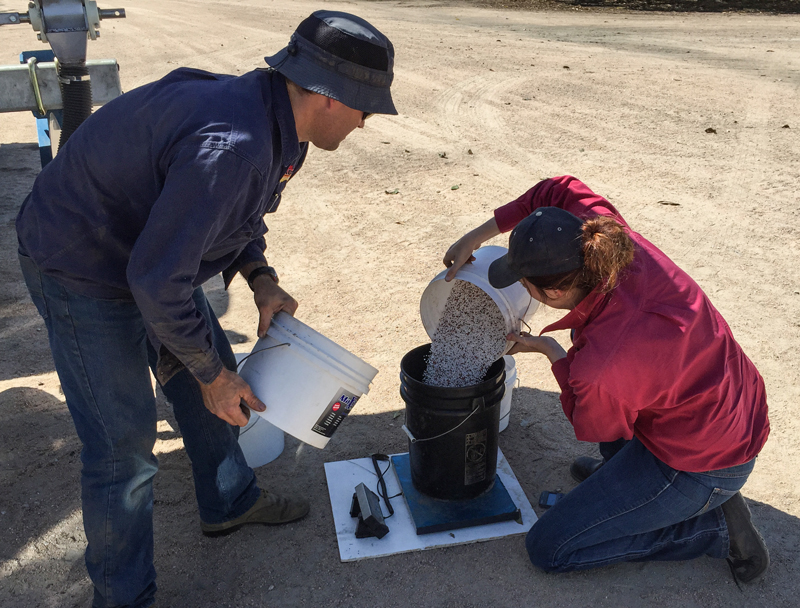Burdekin cane growers aim to maintain yield while reducing nitrogen
Using enhanced efficiency fertilisers could maintain cane and sugar yields while reducing the need for nitrogen inputs, according to early results from an NQ Dry Tropics trial.

Farmacist Burdekin staff calibrating a fertiliser box for enhanced efficiency fertiliser applications.
NQ Dry Tropics Project Officer, Anthony Curro, said that interest in enhanced efficiency fertilisers was growing within the Burdekin sugarcane industry due to their potential productivity, economic and water-quality benefits in a fully-irrigated environment.
“We are running 12 GameChanger Enhanced Efficiency Nitrogen trials, spread between the Burdekin Delta and Burdekin River Irrigation Area (BRIA), that are looking at ways to reduce levels of Dissolved Inorganic Nitrogen leaving farms,” he said.
“The trials, funded by the Australian Government Reef Programme, are focusing on using enhanced efficiency fertilisers such as Entec and Agrocote in varying soil types, with varied application rates and timing.
The trials are being delivered through the NQ Dry Tropics Sugarcane Innovation Programme working closely with partners, Farmacist Burdekin and the Department of Agriculture and Fisheries (DAF). More than 50 cane farmers gathered last week at the Farmacist Burdekin office in Home Hill to hear the initial trial results at the 2016 Annual Research Update.
Farmacist Senior Agronomist Jayson Dowie designed the trials to ensure robust data was collected to help sugarcane farmers make informed decisions based on their particular soil type and farming system.
“First-year results showed no significant difference in tonnes of cane per hectare, or tonnes of sugar produced per hectare, from using different rates and forms of Nitrogen. Results did show, however, that Nitrogen rates could potentially be lowered by using enhanced efficiency fertilisers, which could in turn lead to a better nitrogen-use efficiency factor.
“While the first year was drier than normal, we now have a firm base with which to compare future results. By better matching nitrogen availability to crop demand, we can create a more efficient system and reduce losses out of the system,” he said.
DAF Economist Matt Thompson is working closely with the 12 growers involved to assess the trial’s economic outcomes.
“The economic analysis provides Burdekin sugarcane growers with evidence-based information about the relative profitability of different enhanced efficiency fertiliser products, and the rates at which they are applied,” said Matt.
Maidavale sugarcane farmer Mark Castelanelli said he is looking forward to seeing the second set of yield data generated in the 2016 harvest season on his farm.
“It would be a shame if the trials weren’t continued for the full crop cycle, as it would help with my future nutrient management plans,” he said.
There is potential for enhanced efficiency fertilisers to perform differently in wetter years, and further investigation is needed to look at additional trends regarding sugarcane varieties, crop class, and fertiliser application methods and timing, in regards to harvesting and irrigation.
